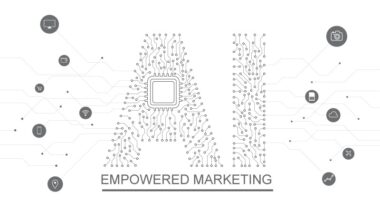If you are an entrepreneur, Start-UP, SMB, or HOD-Sales in an organization, predicting your buyers’ intent happens to be the most daunting task at hand! Agree?
Well, that’s the pressure you undergo while aligning your company’s goals, making competitors’ analyses, and having that edge over them are all a part & parcel of your sales journey.
AI-ML digital technology helps you to understand your prospective customers, target audience, and their specific needs. Machine Learning(ML) is the subset of AI (Artificial Intelligence).
What is Demand Forecasting
AI/ML-enabled predictive analytics help you to predict your consumers’ demand, their buying behavior, and pattern helps to provide actionable insights facilitating a smooth, improved decision-making process.
Although no technology can forecast demand with 100% accuracy, AI-machine learning models can surely help you with the precise demand forecasting that can take you closer to your business goals. Let’s discuss!
The process of predicting demand for certain products/services that are likely to be purchased in the future is termed demand forecasting. It helps manufacturers in deciding what to produce/manufacture and whatnot, retailers what to keep in stock and what not!
Demand Forecasting helps to improve:
- Managing Supply-Chain, Order-fulfillment & Logistics
- Managing Customer Relations
- Managing Marketing Campaigns
- Manufacturing Flow Management
Traditional demand assessment/forecasting methods in sales that have been practiced for decades are:
- Qualitative demand forecasting method
- Quantitative demand forecasting method

Why Demand Forecasting Methods using Machine Learning
In contrast to those traditional methods mentioned above, demand forecasting methods in sales are now adopting modern tools and techniques using Machine Learning digital technology.
The very ML approach helps in:
- Massive Data Analysis (structured/unstructured)
- Accelerating the speed for processing data
- Providing maximum accuracy in the forecast
- Based on the latest data input, automating forecast updates
- Identifying varied hidden patterns in data
- Enhancing adaptability to changes that occur
- Creating a robust mechanism/system
ML (Machine learning) takes demand forecasting to a higher level. Enhanced forecasts with maximum accuracy, and reliability increase as they are based on real-time data, those data that are pulled from varied internal/external sources, viz. social media, demographic details, weather information, online reviews, etc. Supply chain networks leverage ML algorithms and external data and adapt as per external changes and demands.
Moreover, as all new products lack historical data, Machine Learning algorithms/forecasting tools help in identifying historical data, similar products (having similar characteristics & features), and their lifecycle curves, and then using those datasets as a substitute for making precise predictions/forecasting for sales-demand.
Also Read:
A significant area of computational science, ML (Machine Learning), allows decision-making outside the realm of human interaction.
Parameters: Choosing a Perfect Demand Forecasting ML Software
- Functionality Aspects: When you are choosing demand forecasting software for your sales, you need to see if it matches your company’s requirements. AI-ML-powered tools enable you to forecast the demands of your customers in the future, and the software needs to be suitable in the following aspects:
- Whether you are looking for short-term, long-term prediction models, or, both
- Can forecast demand new products
- Estimating price accurately/precisely
- Can do multitiered planning for multiple product groups, channels, and regions
- Capability for an accurate comparison of ‘What-If’ scenarios such as price changes, market fluctuating, changes in assortments, promotions, etc.
- Multidimensional modeling functionality
- Adequate dashboards, reports in granular forms
- Creating Halo effects, avoiding cannibalization of products (when demand fluctuates for one product, it impacts another product that is complementary or competitive in nature).
- Compatibility with Internal Systems: You need to check if the software is compatible with your internal business tools, and whether can connect well with your sales management solution, ERP, etc.
The compatibility of the demand forecasting solution with your internal system is important because that enables a seamless process of data sharing and collecting related information, historical data, etc., and then coming out with demand trends/demand forecasting for sales of products.
It also enables you to streamline procurement as well as capacity management by integrating smoothly with your internal systems, Warehouse Management System (WMS) or Inventory Management System (IMS)
- External Factors & Data Sources: You need to consult a reliable mobile app development company that can guide you to build your software from the scratch. According to your industry type, business type(b2b,b2c), external factors amount to the accuracy of your forecasts, and predictions for future demand in sales.
For instance, macroeconomic trends, weather conditions, third-party syndicated data, customer POS information, online reviews, social media platform data, etc. are significant data sources that can allow for smooth AI-ML-powered demand forecasting methods.
The more data you have at your disposal, the effectiveness, and accuracy increase for demand forecasts and predictions! A successful AI- Machine Learning-based demand forecasting method requires sensible investments on your part, viz. hire qualified, capable ML engineers, specialists, and data engineers who can create some outstanding demand forecasting software for your business!
Wrapping Notes: Machine Learning enabled-demand forecasting methods involve a very low volume of manual work. Owing to a high level of automation capability, they can smoothly incorporate multiple data sources, and variables, and smoothly manage a large volume of data leading to great business outcomes.
In contrast to traditional forecasting methods that can manage established products, Machine Learning methods are the best fit for new products for short-term/mid-term planning amidst volatile demand scenarios. That’s why you are advised to adopt ML (Machine Learning) capabilities to boost your sales in the future using modern demand forecasting methods!






